Nara, once the capital of Japan, is a city where history and tranquility meet. This ancient city, less than an hour from Kyoto, offers a unique journey back in time to explore Japan‘s rich cultural heritage. From majestic temples to friendly deer roaming freely, Nara is a treasure trove of historical wonders. This guide will provide you with the top 5 things to do in Nara.
Best Things To Do in Nara
- Visit Todai-ji Temple
- Stroll Through Nara Park
- Explore Kasuga-Taisha Shrine
- Discover Naramachi, the Old Merchant District
- Enjoy Traditional Japanese Cuisine
Visit Todai-ji Temple
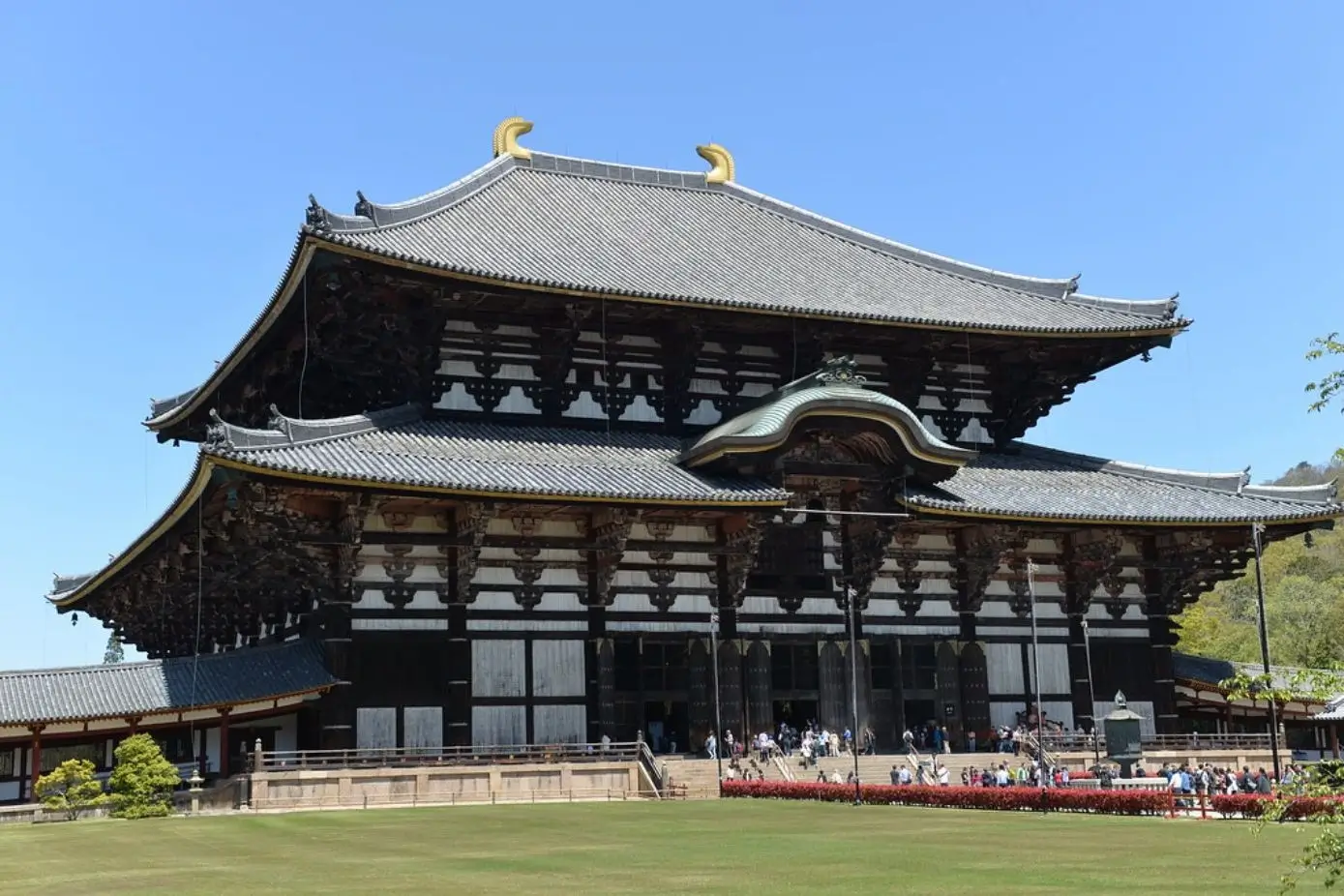
Todai-ji Temple, an architectural and spiritual marvel in Nara, stands as a testament to Japan’s rich Buddhist heritage. This temple complex, renowned for its colossal Great Buddha (Daibutsu), draws visitors from around the world to experience its majesty and historical significance.
Exploring the Temple Grounds
- Daibutsuden: One of the world’s largest wooden buildings, houses the Great Buddha statue and is a marvel of ancient Japanese architecture.
- Daibutsu: The 15-meter-tall bronze statue of Vairocana Buddha (Daibutsu) is not only a religious icon but also an artistic masterpiece, symbolizing the influence of Buddhism in Japan.
- Nigatsu-do and Sangatsu-do Halls: These subsidiary halls host important Buddhist statues and artifacts, with Nigatsu-do known for its balcony offering panoramic views of Nara.
- Museum and Artifacts: Todai-ji’s museum exhibits ancient Buddhist art and treasures, providing deeper insights into the temple’s history and religious significance.
Opening Hours: April to October (7:30 to 17:30) / November to March (8:00 to 16:30).
Entrance Fees: Adult 600 yen / 16 to 18 years old 600 yen / 13 to 15 years old 600 yen / 6 to 12 years old 300 yen.
Accessibility: Todai-ji Temple is easily accessible by foot from Nara Park and other nearby attractions.
Stroll Through Nara Park
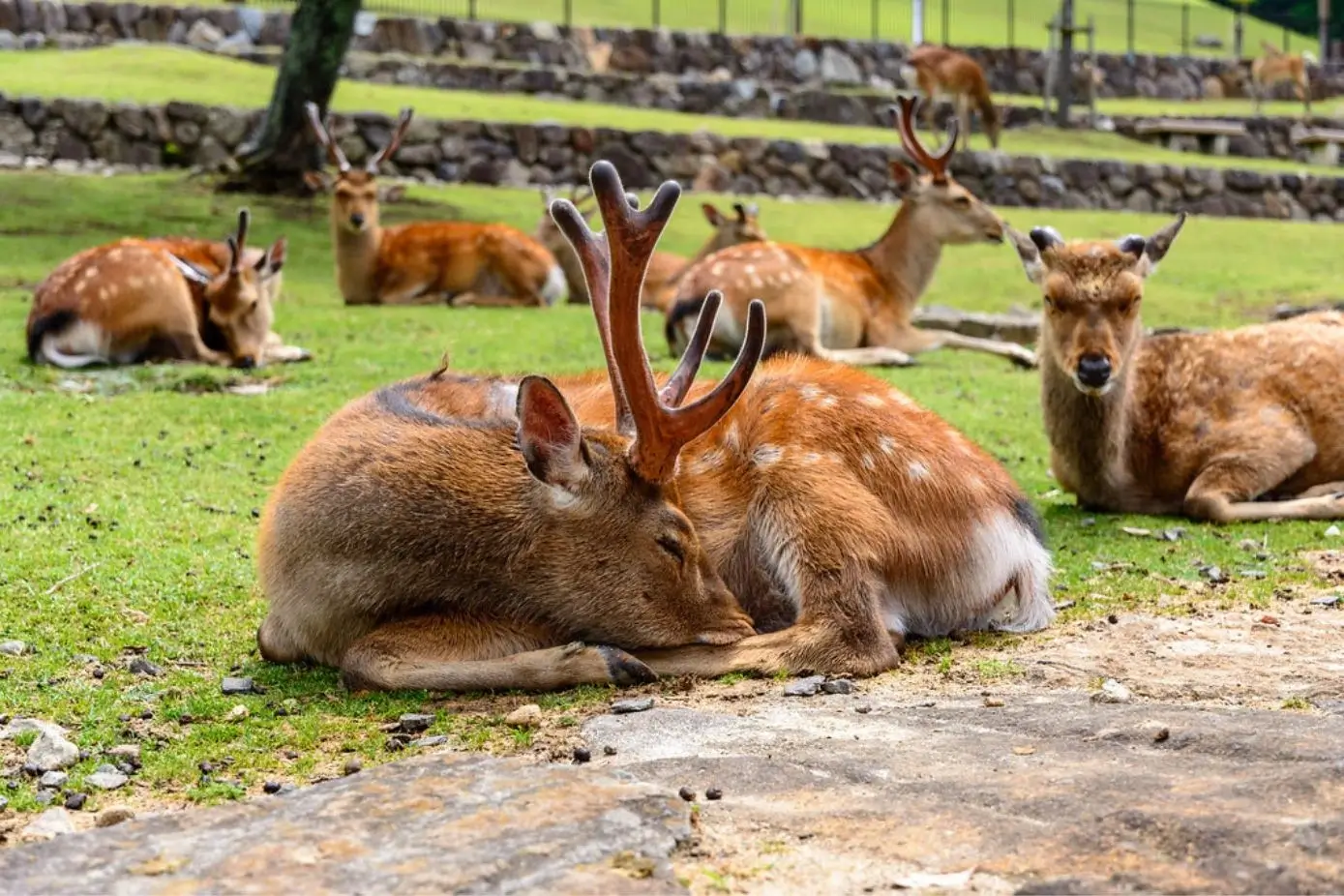
Nara Park, known for its picturesque landscapes and free-roaming deer, is a sprawling public park in the heart of Nara. This vast green space is not just a natural retreat but also a cultural hub, home to some of Japan’s most significant temples and shrines.
Explore Historical and Religious Sites
- Kofuku-ji Temple: Located within the park, this temple features a five-story pagoda, one of Japan’s tallest, and a treasure house displaying Buddhist art.
Meet with Deers – The Gentle Inhabitants
- Sacred Deer: The park’s hundreds of deer are considered sacred, according to local Shinto belief, symbolizing messengers of the gods.
- Friendly Interactions: Visitors can feed the deer with special crackers (‘shika senbei’) available for purchase within the park, offering a unique and memorable experience.
Entrance Fees: Free. However, some temples and museums within the park may have admission fees.
Accessibility: Nara Park is easily accessible on foot from Nara’s main train stations and is close to other attractions in the city.
Explore Kasuga-Taisha Shrine
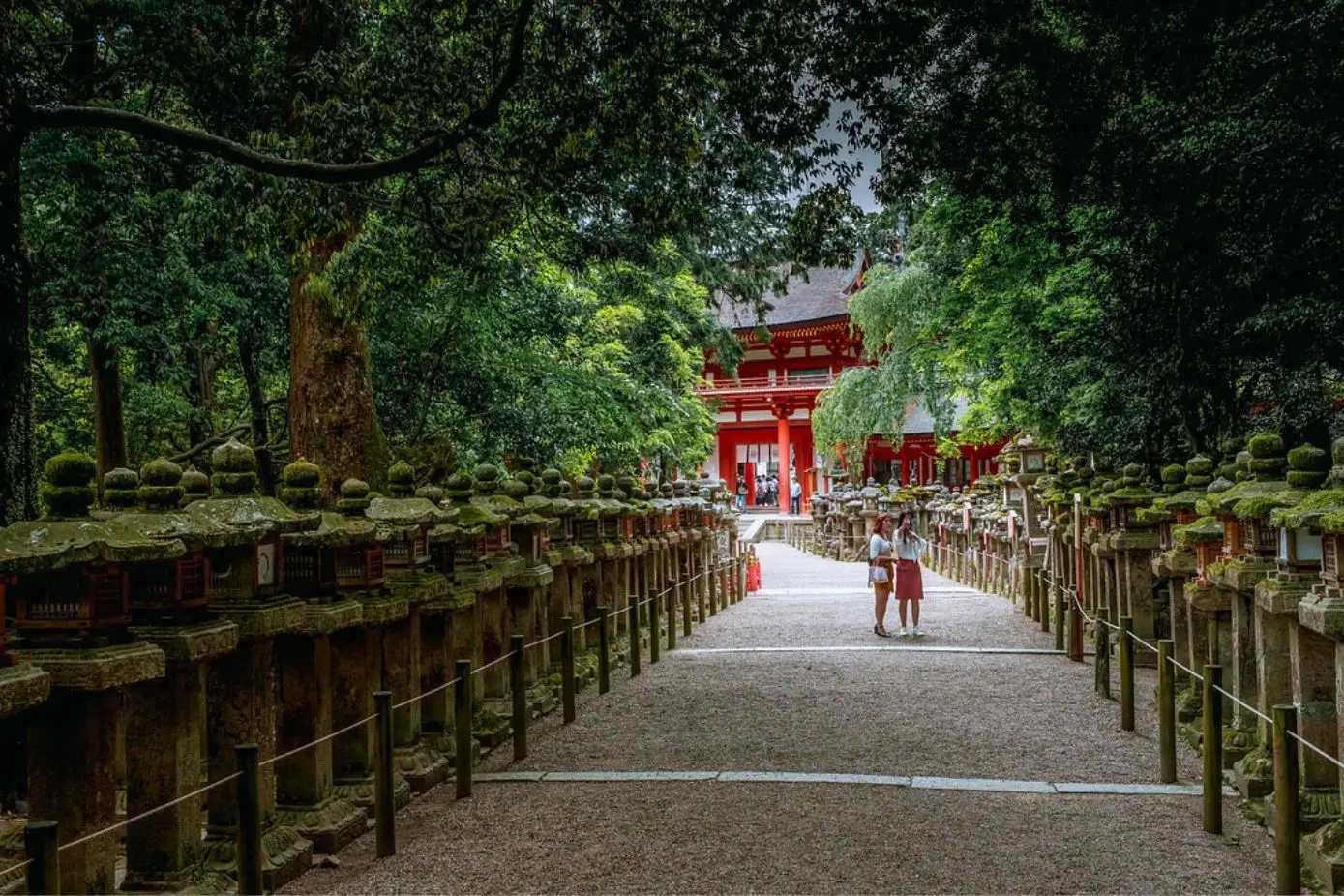
Kasuga-Taisha, nestled within the primeval forest of Kasugayama near Nara Park, stands as a magnificent example of Japanese Shinto architecture and spirituality. Renowned for its hundreds of stone lanterns, this shrine is a serene sanctuary that has been a place of worship for centuries.
- Stone and Bronze Lanterns: The approach to Kasuga-Taisha is lined with hundreds of stone lanterns, creating an enchanting atmosphere, further enhanced during lantern festivals when all lanterns are lit.
- Vivid Vermilion Structures: The shrine’s vivid vermilion-colored buildings, contrasting with the green surroundings, are striking examples of Heian-period shrine architecture.
- Treasure House: The shrine’s treasure house contains a rich collection of relics, including sacred garb, instruments, and manuscripts, offering insights into its religious and cultural significance.
Opening Hours: April – September (6:00 to 18:00) / October to March (6:30 to 17:00).
Entrance Fees: There is no charge to enter the shrine grounds, but the treasure house (Adult: 500 yen / University and High school: 300 yen / Junior High and Elementary school: 200 yen) and botanical garden (Adult: 500 yen / Children: 250 yen) have separate entry fees.
Accessibility: Kasuga-Taisha is a short walk from Nara Park, easily accessible by foot or public transportation.
Discover Naramachi, the Old Merchant District
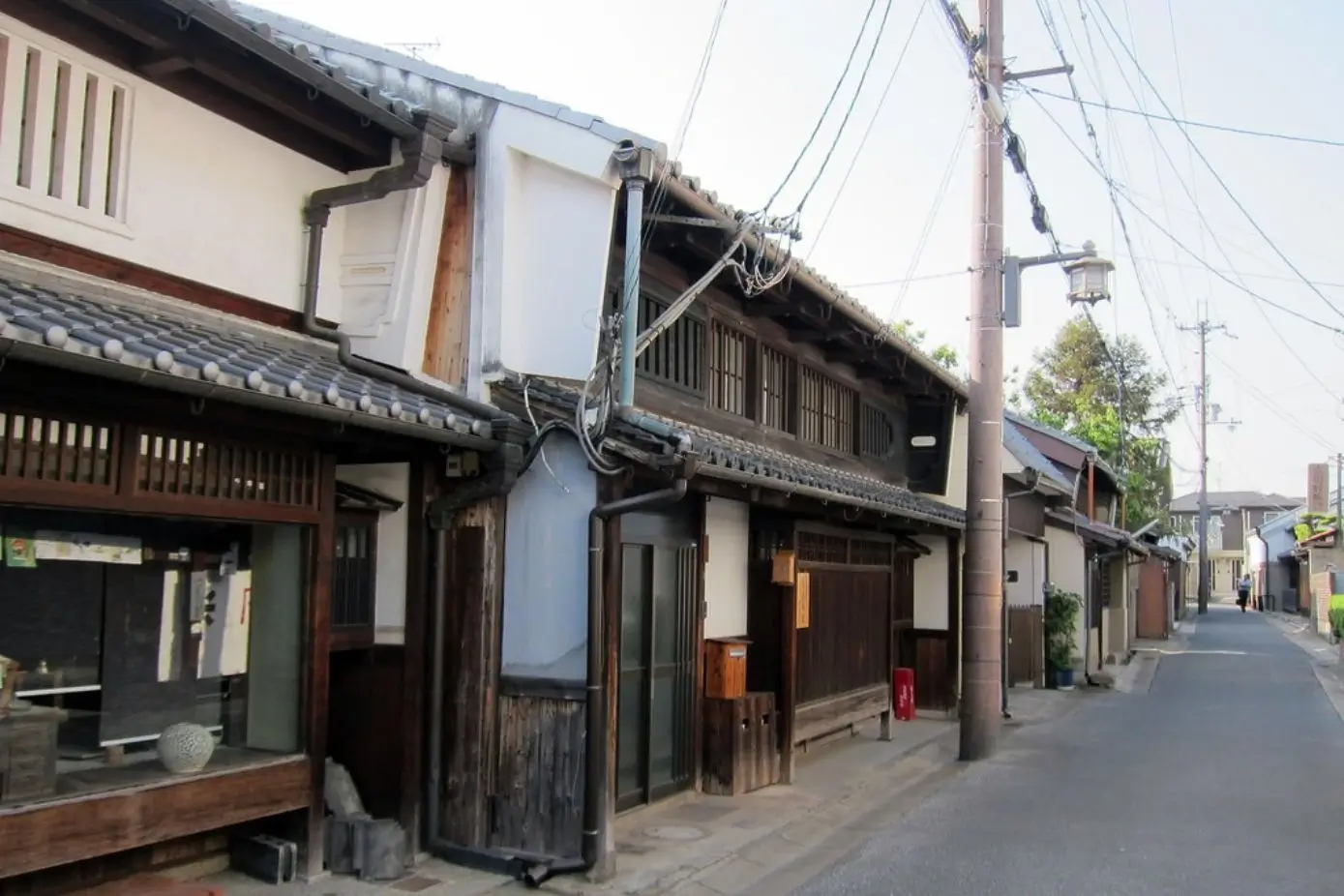
Naramachi, once the bustling merchant district of Nara, retains its historical charm and offers a delightful contrast to the city’s more grandiose religious sites. This area, with its well-preserved traditional buildings and narrow lanes, provides a glimpse into the life of old Japan.
The Edo-Period Townscape
- Machiya Houses: Stroll through the narrow alleys lined with machiya, traditional wooden townhouses that once housed local merchants, many of which have been converted into quaint shops, cafes, and museums.
- Historical Atmosphere: The district’s preserved state offers a rare opportunity to experience the atmosphere of a bygone era, making it a must-visit for history enthusiasts.
- Naramachi Koshi-no-Ie: Visit this restored merchant house turned museum to see the typical layout and design of a traditional machiya.
- Naramachi Shiryokan: This museum showcases the history and development of the Naramachi area. With exhibits on the district’s evolution from a merchant quarter to a modern neighborhood.
Accessibility: Naramachi is easily accessible on foot from major attractions in Nara, such as Nara Park and Kasuga-Taisha.
Enjoy Traditional Japanese Cuisine
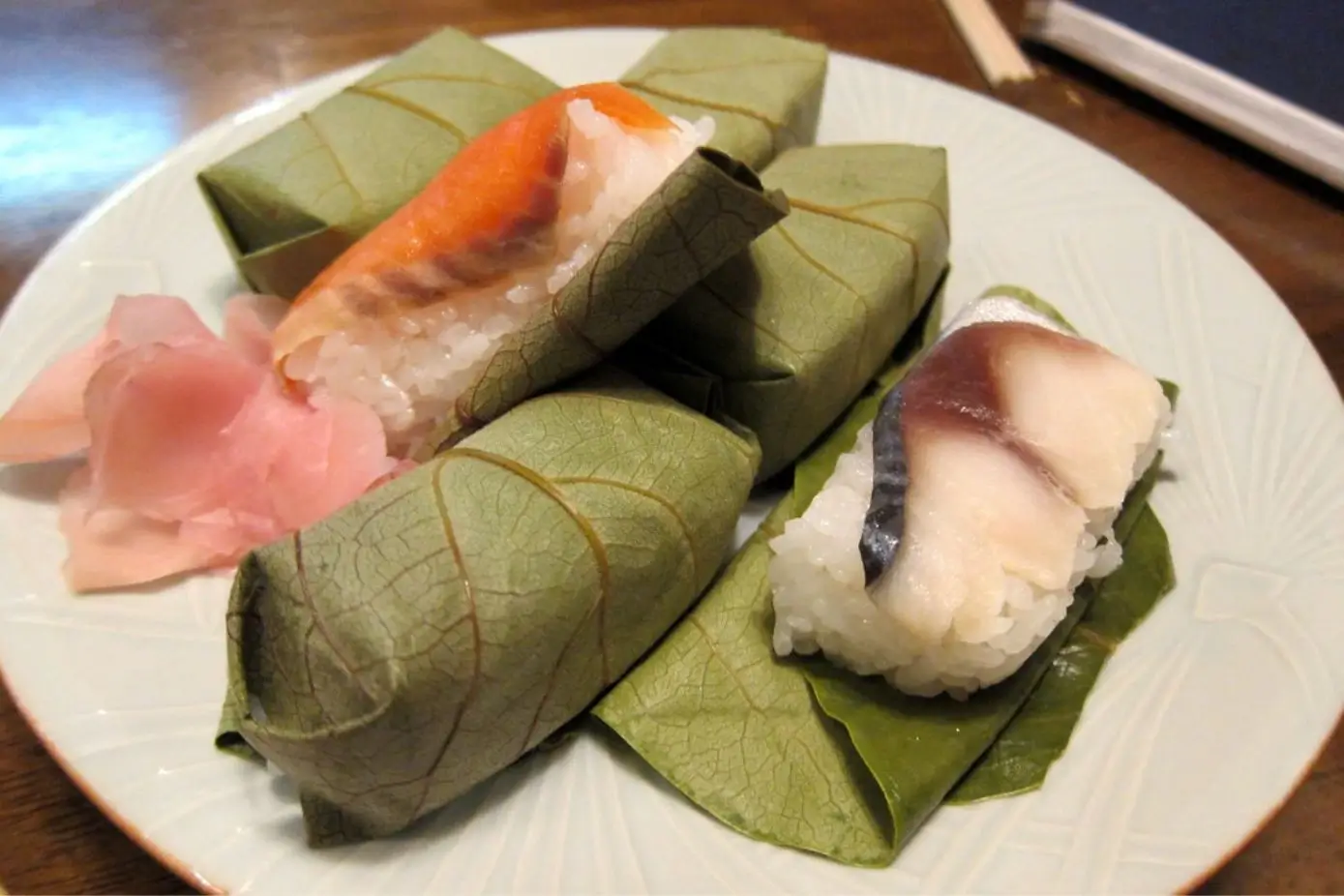
Nara, with its deep historical roots, offers an exquisite culinary scene that reflects its rich cultural heritage. From traditional kaiseki meals to unique local specialties, the city provides a gastronomic experience that is both diverse and deeply rooted in Japanese culinary traditions.
To enjoy your japanese cuisine experience at its fullest, make sure to check our guide on how to eat with chopsticks.
Savoring Nara’s Local Delicacies
- Kakinoha Sushi: Unique to Nara, this sushi is wrapped in persimmon leaves, which impart a subtle aroma and flavor to the rice and fish. You can taste it in several restaurants in Nara, like Kakinohasushi Hompo Tanaka (Price Range: 1,000 to 2,999 yen).
- Narazuke Pickles: These traditional pickles, soaked in sake lees, are a staple of Nara’s cuisine, known for their distinctive taste and texture. The most famous place to find those pickles in Nara is Shirozakeya.
The Tea Experience
- Matcha and Wagashi: Visit one of Nara’s traditional tea houses like Sarasa to enjoy matcha green tea paired with wagashi, Japanese sweets that are both delicious and artistically crafted.
- Tea Ceremony: For those interested in deeper cultural immersion, participating in a Japanese tea ceremony offers insight into the ritualistic preparation and serving of matcha. Many tea houses host traditional Japanese tea ceremonies like in Sangoya.
Final Thoughts
Nara is a city that captivates with its deep historical roots, serene natural beauty, and cultural richness. Whether you are exploring its ancient temples, wandering through its peaceful parks, or savoring its traditional cuisine, Nara offers an unforgettable experience of Japan’s timeless charm.
FAQ
Nara is easily accessible from Kyoto and Osaka by train, making it an ideal destination for a day trip or overnight stay. Explore day trips from Kyoto for more travel ideas.
Nara is best explored on foot, allowing you to wander through its scenic parks and historic streets at your own pace. For navigating the city, consider using Japanese public transportation.
The deer in Nara Park are accustomed to human presence and are generally friendly, but visitors should approach them with caution and respect.

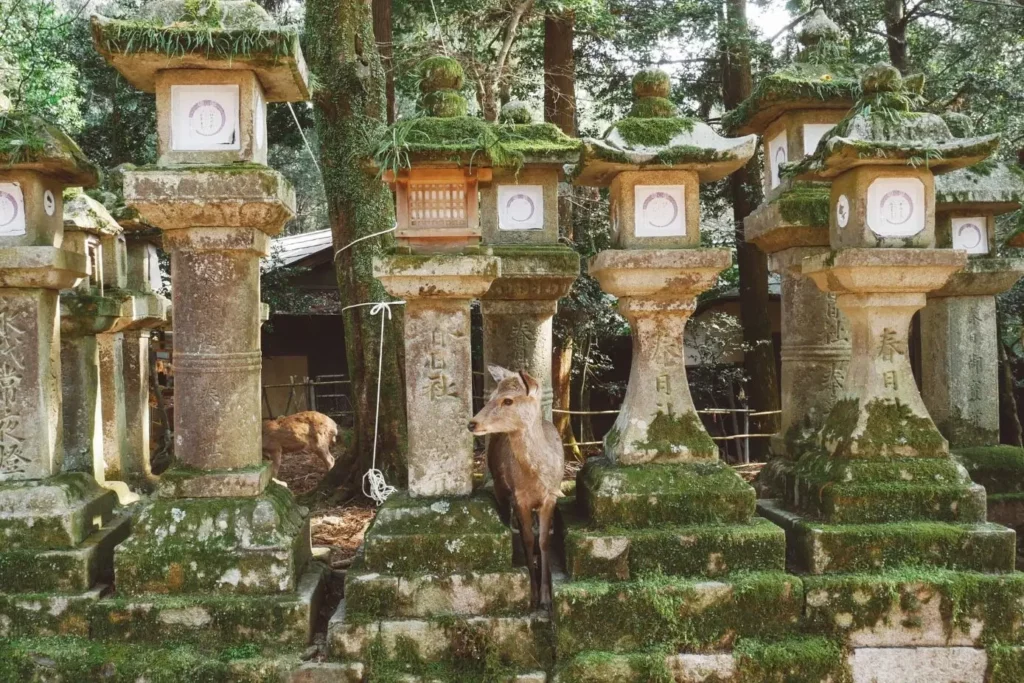






Its excellent as your other content : D, regards for putting up.
Thank you! Means a lot! 😁